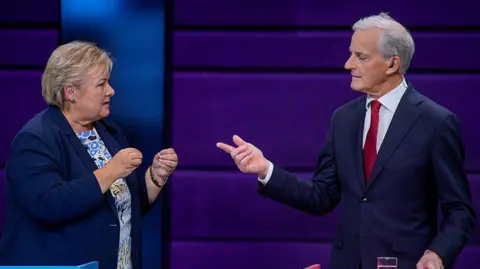In a landmark event for the Catholic Church, Pope Leo XIV presided over his inaugural Mass in St. Peter’s Square, publicly marking the beginning of his reign as the first American pope to lead the 1.4 billion strong Catholic community. The ceremony, rich in symbolism and tradition, attracted dignitaries from around the world, including Vice President JD Vance, Secretary of State Marco Rubio, and President Volodymyr Zelensky of Ukraine, all there to witness the historic moment.
The new pontiff, born Robert Francis Prevost in Chicago, was elected to the papacy earlier this month, breaking the longstanding tradition of choosing a pope outside of a global superpower. In his homily, Pope Leo emphasized his role as a shepherd who must both honor the church's heritage and effectively address contemporary challenges, including the influence of artificial intelligence and ongoing violence in conflicts like those in Ukraine and Gaza.
Pope Leo made waves as he ushered in a new chapter for American Catholics, taking office during a time of internal divisions within the church. He called for unity, saying "with fear and trembling, I come to you as a brother," while expressing hope for progress and peace worldwide.
Key aspects of his inaugural Mass included a symbolic rite of obedience performed by twelve individuals representing various communities, and the presentation of the Fisherman’s Ring and the pallium, symbols of his authority as Pope. As the Mass unfolded, the congregation responded with applause and chants celebrating their new leader.
In attendance were leaders from multiple nations, showcasing not only the pope’s global significance but also the intricate relationship between the Vatican and various countries’ political landscapes. NGOs and alumni from Pope Leo's alma mater, Villanova University, also gathered in Rome, reflecting pride and hope for the future direction of the church under his stewardship.
As these events transpire, anticipation surrounds the pontiff's early priorities and how his leadership will redefine American Catholicism, which faces unique challenges contrasted against the backdrop of global church dynamics.
The new pontiff, born Robert Francis Prevost in Chicago, was elected to the papacy earlier this month, breaking the longstanding tradition of choosing a pope outside of a global superpower. In his homily, Pope Leo emphasized his role as a shepherd who must both honor the church's heritage and effectively address contemporary challenges, including the influence of artificial intelligence and ongoing violence in conflicts like those in Ukraine and Gaza.
Pope Leo made waves as he ushered in a new chapter for American Catholics, taking office during a time of internal divisions within the church. He called for unity, saying "with fear and trembling, I come to you as a brother," while expressing hope for progress and peace worldwide.
Key aspects of his inaugural Mass included a symbolic rite of obedience performed by twelve individuals representing various communities, and the presentation of the Fisherman’s Ring and the pallium, symbols of his authority as Pope. As the Mass unfolded, the congregation responded with applause and chants celebrating their new leader.
In attendance were leaders from multiple nations, showcasing not only the pope’s global significance but also the intricate relationship between the Vatican and various countries’ political landscapes. NGOs and alumni from Pope Leo's alma mater, Villanova University, also gathered in Rome, reflecting pride and hope for the future direction of the church under his stewardship.
As these events transpire, anticipation surrounds the pontiff's early priorities and how his leadership will redefine American Catholicism, which faces unique challenges contrasted against the backdrop of global church dynamics.





















